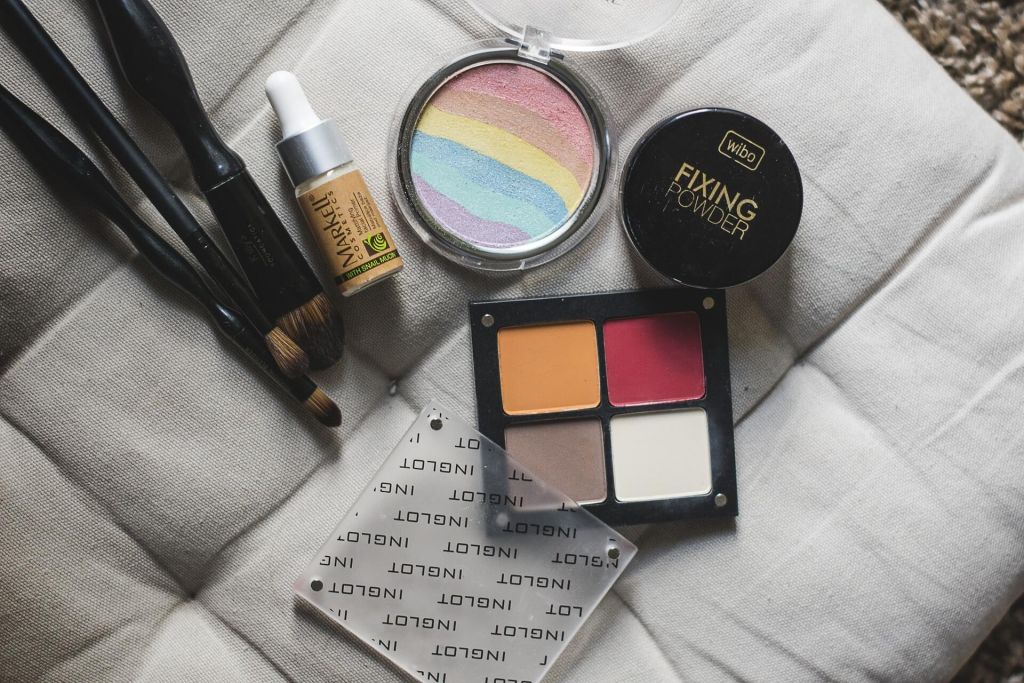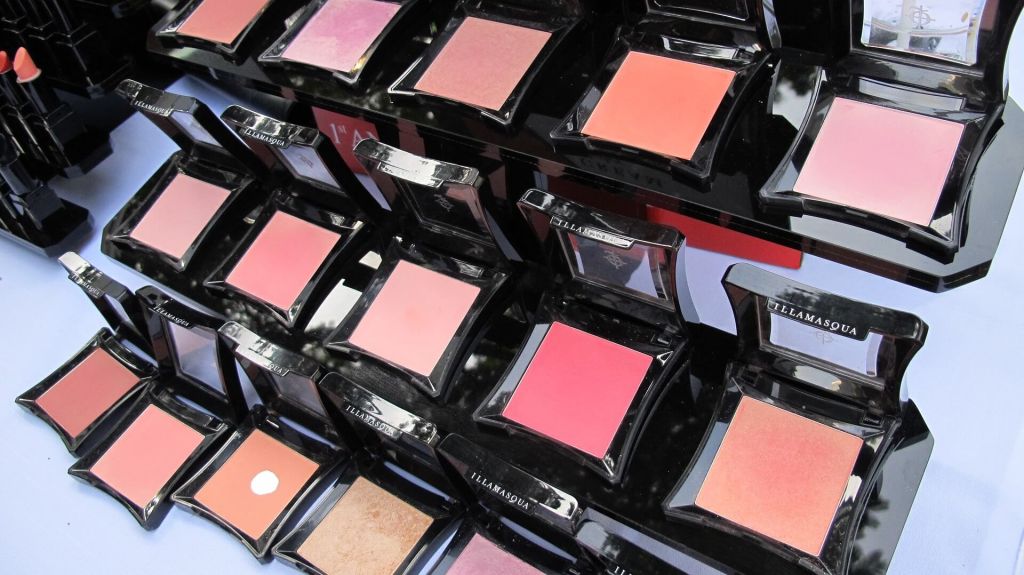Asbestos in Makeup: A Comprehensive Guide
Last Updated on 4 July 2023
Introduction
Makeup is an important aspect of many peoples grooming routine, whether you are male or female. We use it to make ourselves look beautiful, feel good, and it because gives us more confidence. However, when it comes to makeup, there are a few things we should be mindful of. One of them is the presence of asbestos in some makeup and cosmetics.
Asbestos is a naturally occurring substance that may cause cancer, asbestosis and other significant health problems if it’s inhaled. Asbestos exposure has been directly linked to mesothelioma. Mesothelioma is often referred to as a ‘rare’ cancer.
However, over 30,000 cases were reported globally in 2020 and it is thought this number is heavily under-reported in many developing countries.
The UK reportedly has one of the highest mesothelioma rates in the world. This is down to the fact that asbestos materials were so widespread in building and construction post world war 2 along with the production of asbestos products across the UK.
Should you be concerned about asbestos in makeup?
Concerns have been growing over recent years about the presence of asbestos in makeup products. And there are increasing reports emerging that dozens of British women are now seeking compensation from US cosmetic companies, after having developed mesothelioma cancer as a result of using their products containing talc.
Some high profile cases have involved cosmetic giants Johnson & Johnson, Clinique, Estee Lauder and Avon. And many US cosmetic companies have now removed talc from their products as a result of lawsuits being filed against them in recent years.
The US have recently tightened federal control over cosmetic products, and talc use will probably decrease rapidly. Furthermore, In Europe, EU countries have started testing talc in products for asbestos and are turning up worrying results. Although the UK is now out of Europe, we are standing still with asbestos regulations, whilst the EU is moving forward.
Despite the concern, research conducted by Cancer Research UK states there is no proven link between cosmetic products and cancer. However, they do say that in some studies, the use of talcum powder has been shown to increase the potential of developing ovarian cancer if used on the genital area.
There may be no proven link between the two as of yet, but the weight of evidence is heading in that direction, driven by concerns in the US.
So should you be concerned? This article will look at the existence of asbestos in make-up and beauty products, the problems it poses, and how you can avoid it.

Traces of asbestos have been found in some make-up and cosmetics after testing in products containing talc
What exactly is asbestos?
Asbestos is a naturally occurring mineral that is composed of tiny fibres which are invisible without a microscope. Because of its fire resistance, insulating characteristics, and durability, it was previously frequently used in construction materials.
However, it was later revealed that asbestos exposure may lead to a variety of health issues, including lung cancer, mesothelioma, and asbestosis.
As a result, the importation and use of asbestos in products and materials was banned in the UK in 1999.
How can asbestos end up in make-up?
Talc, a soft mineral that is used in numerous cosmetic items, including makeup, can be contaminated with asbestos if mined from an asbestos-rich deposit. Talc is a common filler in cosmetics and is used as a bulking agent and to provide a silky texture. Talc can also be found in Ceramics, Paint, Insecticides, Rubber gloves and many more products.
If the talc used in a makeup product is contaminated with asbestos, then the asbestos fibres can be released into the air when the product is applied, posing a risk of inhalation.
Which make-up products may contain asbestos?
Asbestos has been discovered in several makeup items, including:-
Foundation
One of the most widely utilised cosmetic items that may contain asbestos is foundation. It is frequently produced using talc, which might include asbestos.
Blusher
Another beauty product that may contain asbestos is blusher. It is frequently made using talc, which could contain asbestos.
Eyeshadow
Yet another makeup item that may contain asbestos is eyeshadow. It is often manufactured using talc, which may contain asbestos.
Mascara
Mascara is another make-up item that may contain asbestos. It is frequently produced using talc, which can contain asbestos.
Powder
Another cosmetic product that may contain asbestos is powder. It is often produced using talc, which might include asbestos.
Talc is generally tested for asbestos either before purchase in bulk or prior to use by companies. One of the issues appears to be the type of test used. The common test for asbestos is known as polarised light microscopy and dispersion staining. A number of scientists in the US and Europe believe the test is fundamentally flawed, unless the correct sample preparation techniques are used.
What are the risks of asbestos in makeup?
Asbestos exposure can lead to a variety of health issues, including lung cancer, mesothelioma, and asbestosis. Fibres in the asbestos can become stuck in the lungs after being breathed in, causing scarring and inflammation. This can lead to major health issues over time.
If asbestos is present in makeup products, there is a significant risk that the fibres could become airborne and be inhaled during application. There is also a risk of ingestion if the makeup is applied near the mouth or if it comes into contact with food or drink.
While the risk of asbestos exposure from make-up products is generally considered to be low, any level of exposure to this hazardous substance is a cause for concern.
This is why regulatory agencies such as the FDA and the European Union have strict limits and no asbestos is allowed in cosmetic products. In fact the WHO (World Health Organisation) state ‘there is no known safe level of exposure to asbestos’.

Some powder based make-up products that contain talc, such as blusher, could contain asbestos
Which cosmetic brands have been found to contain asbestos?
There have been several cosmetic and makeup brands that have been found to contain asbestos in the past. Indeed, the majority of these are American brands. Some of these brands include:-
Johnson & Johnson
In 2019, Johnson & Johnson voluntarily recalled one lot of their Baby Powder product after the FDA found trace amounts of asbestos in a sample.
Claire’s
In 2017, Claire’s voluntarily recalled several makeup products after reports that they may contain asbestos. Subsequent testing found that the products were free of asbestos.
L’Oréal
In 2017, a French consumer watchdog group found traces of asbestos in some of L’Oréal’s cosmetic products. The company denied the claims, but the products were pulled from shelves as a precaution.
Revlon
In 2019, the FDA issued a warning letter to Revlon after the agency found asbestos in four of the company’s cosmetic products during testing.
MUA
Traces of asbestos were found in a discontinued eyeshadow palette back in 2019 after testing in the US. The case was highlighted in a BBC documentary called ‘Beauty Laid Bare’.
Makeup manufacturers are required to list all ingredients on their product labels, so consumers can check for any ingredients that they may be allergic to or concerned about.
So it’s always a good idea to check for product recalls and ingredient lists before using any makeup product.
How can I avoid makeup containing asbestos?
In order to avoid asbestos in makeup, thoroughly study the ingredient list before purchasing any make-up items. Look for items that are ‘talc-free’.
In order to determine if a product has been tested for asbestos, see the Environmental Working Group’s Skin Deep Cosmetics Database. Please bear in mind this is an industry group with industry concerns and protections as its main priority.
Which cosmetic brands are talc free?
More and more cosmetic brands are choosing not to use talc in their products.
Some talc-free cosmetic brands include:-
- Burt’s Bees
- Pacifica
- RMS Beauty
- Cover FX
- ILIA
- Jane Iredale
- Tarte
- Mineral Fusion
- Physicians Formula
- W3LL People
- Smashbox
- Shea Moisture
- Honest Beauty
- Ecco Bella
- Juice Beauty
- Everyday Minerals
- Affordable Mineral Makeup
It’s important to note that not all products from these brands are talc-free, so it’s always a good idea to check the ingredient lists before purchasing any cosmetics.
Conclusion
The size of the problem relating to asbestos (in talc) in cosmetics and makeup is growing, based on testing undertaken by those outside the mainstream industry. The industry does not like being challenged.
It’s up to consumers to make an informed decision, and the safest approach currently is to use make up (or any products) that do not contain talc as an ingredient.
FAQs
Q1. Is asbestos still used in makeup today?
While the use of asbestos is now prohibited in many countries, it is still permissible in others. So in order to avoid items that may contain asbestos, thoroughly check the ingredient list along with doing research. If it contains talc, then there’s a small chance it could contain asbestos.
Q2. How do I determine whether a product includes asbestos?
It might be difficult to determine whether a product contains asbestos just by looking at it. The easiest method to be sure is to look at the ingredient list for talc or other components that might be contaminated with asbestos.
Q3. Is it safe to use talc-based makeup?
Talc is not hazardous in itself, but it can be contaminated with asbestos if extracted from an asbestos-rich deposit. In order to prevent the hazards of asbestos, search for talc-free goods.
Q4: Can asbestos in make-up cause cancer?
Yes, asbestos exposure caused by using make-up that contains asbestos can result in cancer, including lung cancer, mesothelioma, and other forms of cancer.
Q5. What should I do if I believe I have been exposed to asbestos through makeup?
If you have been exposed to asbestos through makeup, you should seek medical advice as soon as possible. Your doctor can do tests to see if you’ve been affected and, if so, offer appropriate treatment. The connection between asbestos related illness and the source of the asbestos can be difficult to prove. The time between exposure and illness can be between 25 and 60 years. If you are diagnosed with an asbestos related illness and believe cosmetics could be the source, a specialist solicitor will be able to provide appropriate guidance.
Need asbestos advice?
We hope you found our article on asbestos in makeup useful. If you need any help or advice with any aspect of asbestos management, then we’ll be very happy to assist. Give us a call and our experts will give you some advice and guidance on whatever if is you’re concerned about.
Please contact us on 0800 141 2676, email us at info@rbasbestos.co.uk or fill in the form below.
Our professional asbestos surveyors conduct asbestos inspections and asbestos surveys every day across the UK on all types of properties, both residential and commercial, for private home owners and commercial property Managers and owners. So when it comes to managing asbestos in your property, you’re in very safe hands with RB Asbestos Consultants.

